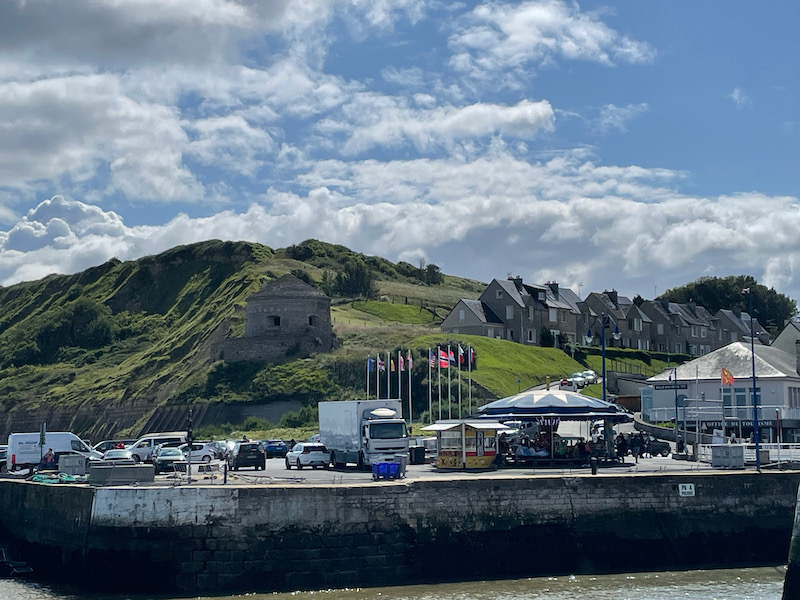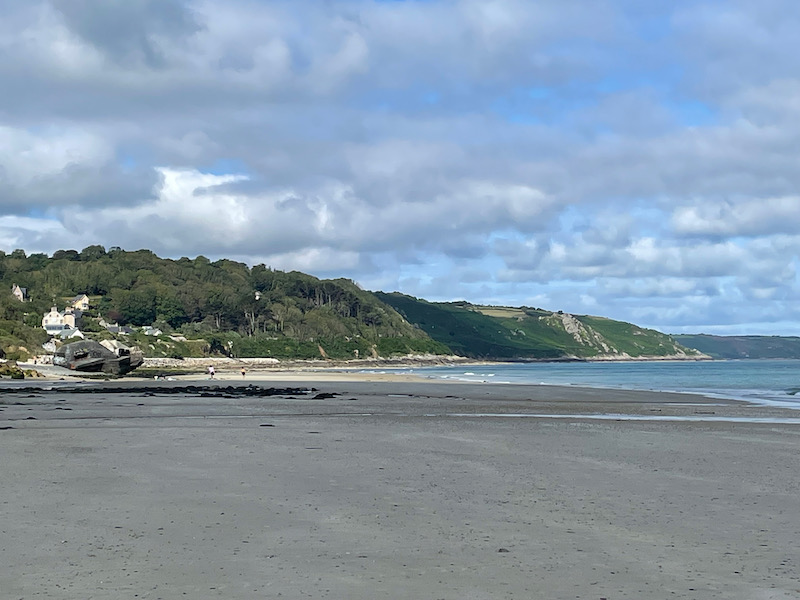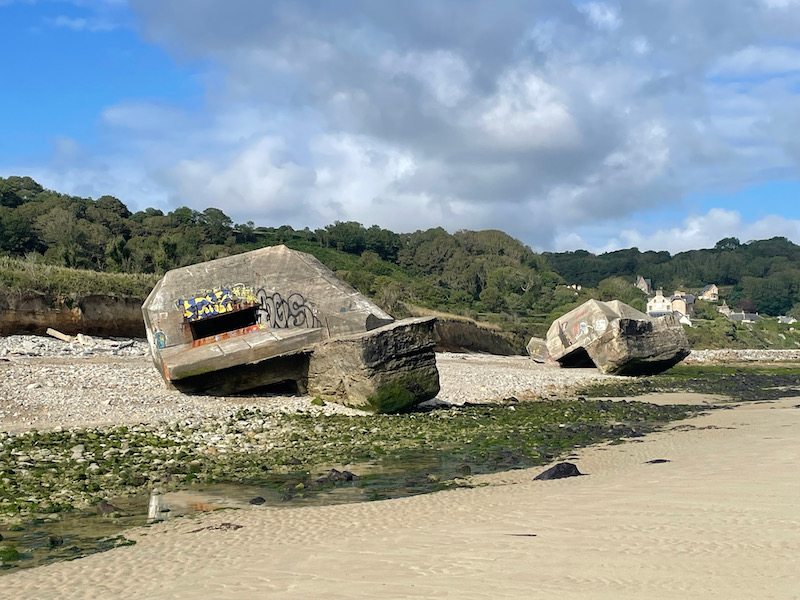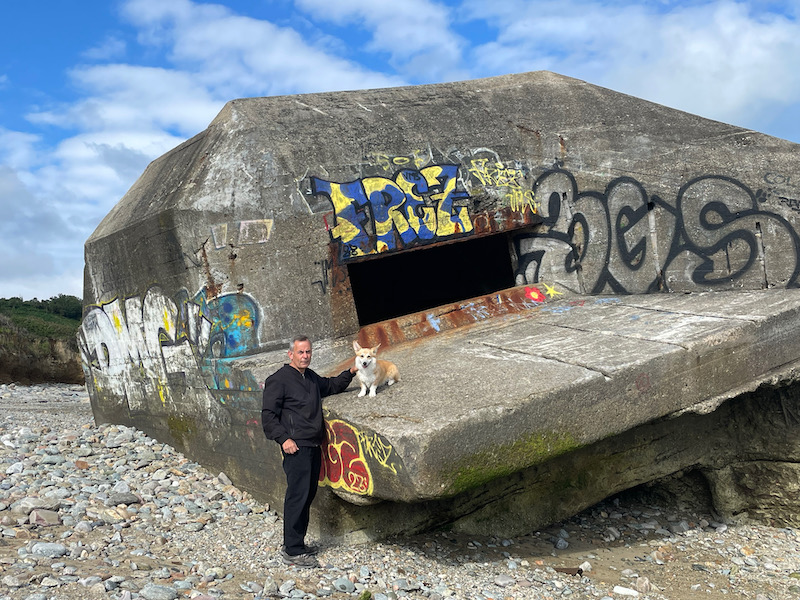Our Blog - Normandy 2023 - Part 1
I have mentioned previously that we like to take a long vacation over the summer in Northern France. The last 2 years, we spent the time in Brittany (Bretagne) and so this year, we decided to move a bit east and spent this year in Normandy. We spent basically 4 weeks in Normandy, counting the travel days and and back, so I have broken this into 3 parts .... general, the way up, and week 1, then week 2, and finally week 3 and the way home.
Most Americans know Normandy from World War II and the D-Day landings that occurred on the beaches here. And while we visited a couple of the beaches (Utah and Omaha), we also tried to get a feeling for the rest of the region. From a food-and-drink point of view, they have some very specific specialities.
- Cider is popular here, just like it is in Brittany. It is made from the juice of Normany apples once they have ripened and fallen to the ground and fermented for several months. With an alcohol level between 4.5% and 7.5%, it is fairly easy to drink for everyone.
- Calvados is both the name of a department and a brandy. The process starts with cider and then it is distilled twice before being put into oak barrels to age and mature (at least 2 years to be called AOC Calvados). While the history of Calvados goes back to the 100's, it wasn't until the end of the 19th century when the phylloxera outbreak devastated vineyards that it became popular. It generally has an alcohol percentage of at least 40%.
- Pommeau is created by mixing cider and calvados. This is a relatively new drink, only created in 1982, and it is ready to drink when the alcohol content reaches 18%.
- Camembert cheese is one of the most famous cheeses from this region. It was first made in the late 18th century in the town of Camembert and is similar to Brie but with a slightly lower fat content. To be a "true" Normandy Camembert, it must be made with unpasteurized cow's milk although a lot of non-artisanal camembert now uses pasteurized milk for safety purposes. It ages for at least 3 weeks to produce the delicate white bloomy edible rind and a creamy texture.
- Livarot cheese is another Normandy cheese made from cow's milk. It is a soft, pungent, washed rind cheese with an orangish-colored rind. When you buy it, it is normally wrapped in dried reeds, which gives it a nickname of "colonel", as the rings of reeds looks like the strips on a colonel's uniform. It went out of fashion as a cheese at the end of WWII when the fat content went from 15% to 40% and the taste/aromas became milder and creamier. In the 1970's, it gained an OAC recognition and the production increased again.
- Neufchâtel cheese is the oldest Normandy cheese, dating back to perhaps the 6th century, from the town of Neufchâtel-en-Bray. It has a sharper and saltier taste than camembert and has a slightly grainy texture. It is normally sold in the shape of a heart (the story is that during the 100 years war, the young girls would form the cheese into hearts to show their affection to the English soldiers). For Americans who may have seen "Neufchâtel" in the US, there is an "American" version that was created in 1872 and is a type of reduced-fat cream cheese, made by adding cream to the traditional Neufchâtel recipe.
We took a couple days to drive all the way up to Normandy, since it is on the English Channel. Our first day, we made two stops, one at the Plus Beau Village of Castelnaud-la-Chapelle to walk through the village and up to the castle at the top, and then to the medieval village of Sarlat-la-Canéda. This area (Perigord) is famous for truffles and walnuts and a bit of trivia: many of the exterior shots for the 1977 film by Ridley Scott, The Duellists were shot in and around Sarlat-la-Canéda and the final duel scene was filmed at the unrestored Château de Commarque nearby.
Our second day up was a pretty calm day. We left our B&B (which was on a family farm) and headed North. A stop at Chateau Jumilhac and its gardens and then a puppy walk the Lake at Belle-isle near Chateauroux before checking into another B&B.
Our final drive up started with the Plus Beau Village of Montrésor and then to our first gîte, which will be our home-away-from-home for a week.
Our first week was spent about 30 minutes from the D-day beaches, and so we spent a little bit of time around there, but then also up the Cotentin Peninsula. There were LOTS of D-day things to do and see, including (I think) at least 1 museum about D-day in every town! Needless to say, we didn't do any museums and really only 1 major D-day activity outside of letting Lucy run on both Omaha and Gold beach.
After letting Lucy run at Omaha Beach, which is one of the D-Day landing sites, we headed to an open market in the town of Port-en-Bessin-Huppain for a bit of grocery shopping. Sitting above the port is the Vauban Tower, built in 1694. It is an artillery tower with 4 cannon openings. The tower is built of limestone, with a conical roof in the shape of a pepper shaker, with a limestone cover.

We had stopped by Caen as part of a larger trip to the Normandy Beaches in 2007 although you couldn't really tell from looking at the blog as it only has 3 pictures of the entire city! This time, we did a proper tour of Caen, hitting most of the highlights.
Another full day, starting at the town of Saint-Vaast-la-Hougue before heading to the Plus Beau Village of Barfleur for a visit and their famous Mussels with Normandy cream. Then a quick peak in the tiny village of Gatteville-le-Phare before making our last stop at Sainte-Mere-Eglise, home of the Airborne Museum.
Lucy on another beach, this time near Cherbourg at the upper part of the peninsula. Nice views and a couple old WWII German blockhouses .... Lucy made sure there was no threat now!



Then on to Cherbourg, which was a key port in WWII and somewhat famous (in France at least) for the 1964 movie Les Parapluies de Cherbourg staring Catherine Deneuve.
You may start seeing a pattern here, but this morning we took Lucy to get another beach! This time, it was Gold Beach at Arromanches-les-Bains, where the British landed on D-Day. After a trip through the market, we dropped Lucy off to relax while we toured the town of Bayeux, famous for the Bayeux Tapestry.
Our last major site for our first week was a visit to the Chateau of William the Conquerer in the town of Falaise, although calling it "his" chateau I think is a little misleading :-) We also played some golf and relaxed a bit before checking out of our first gîte and heading a bit east to our next one.
A quick stop at a beach in Villers-sur-Mer but it was PACKED with kids and so we just walked a little bit and then headed to the old port town of Honfleur for a walk around the town and lunch. Then we headed inland and east to check into our next gîte.
Continue on to Part 2 of my Normandy 2023 blog.
Or jump straight to Part 3 of my Normandy 2023 blog.